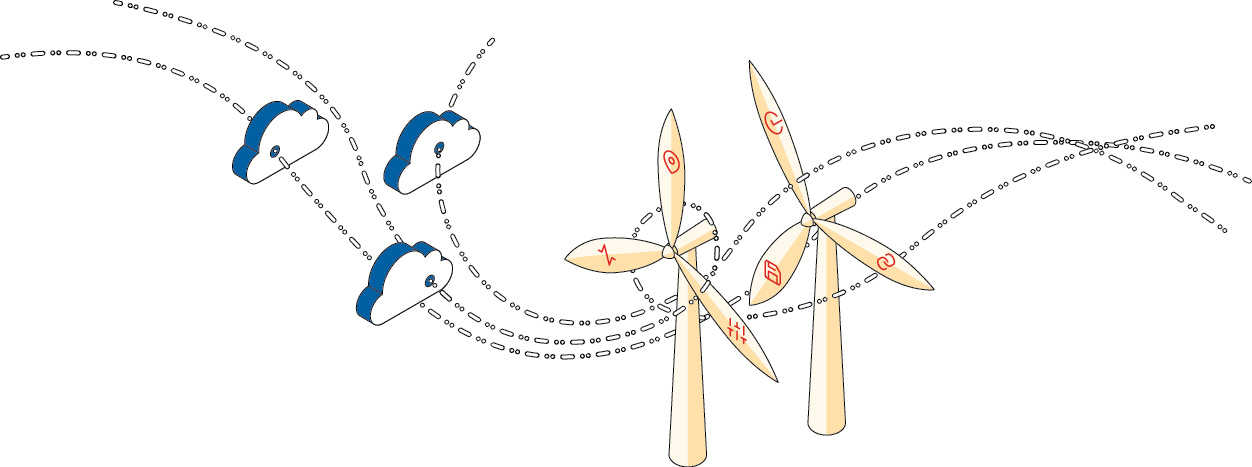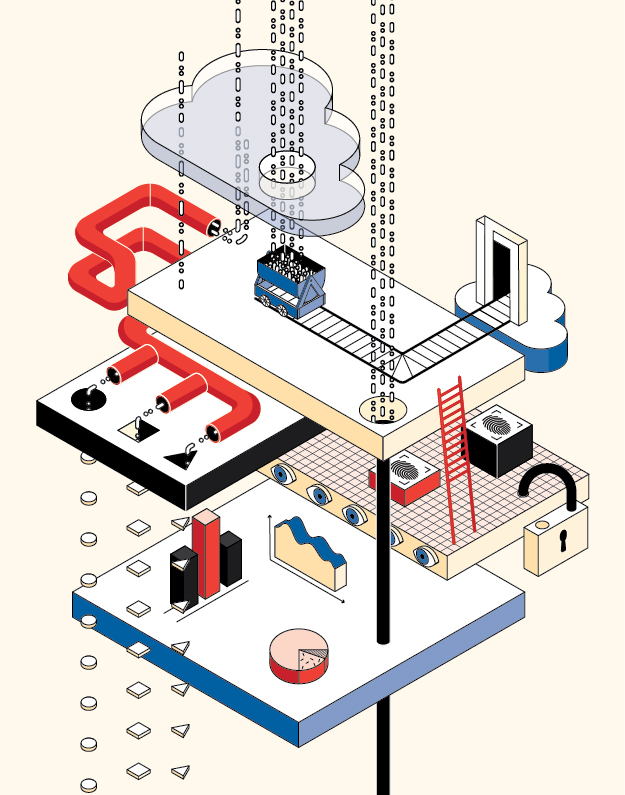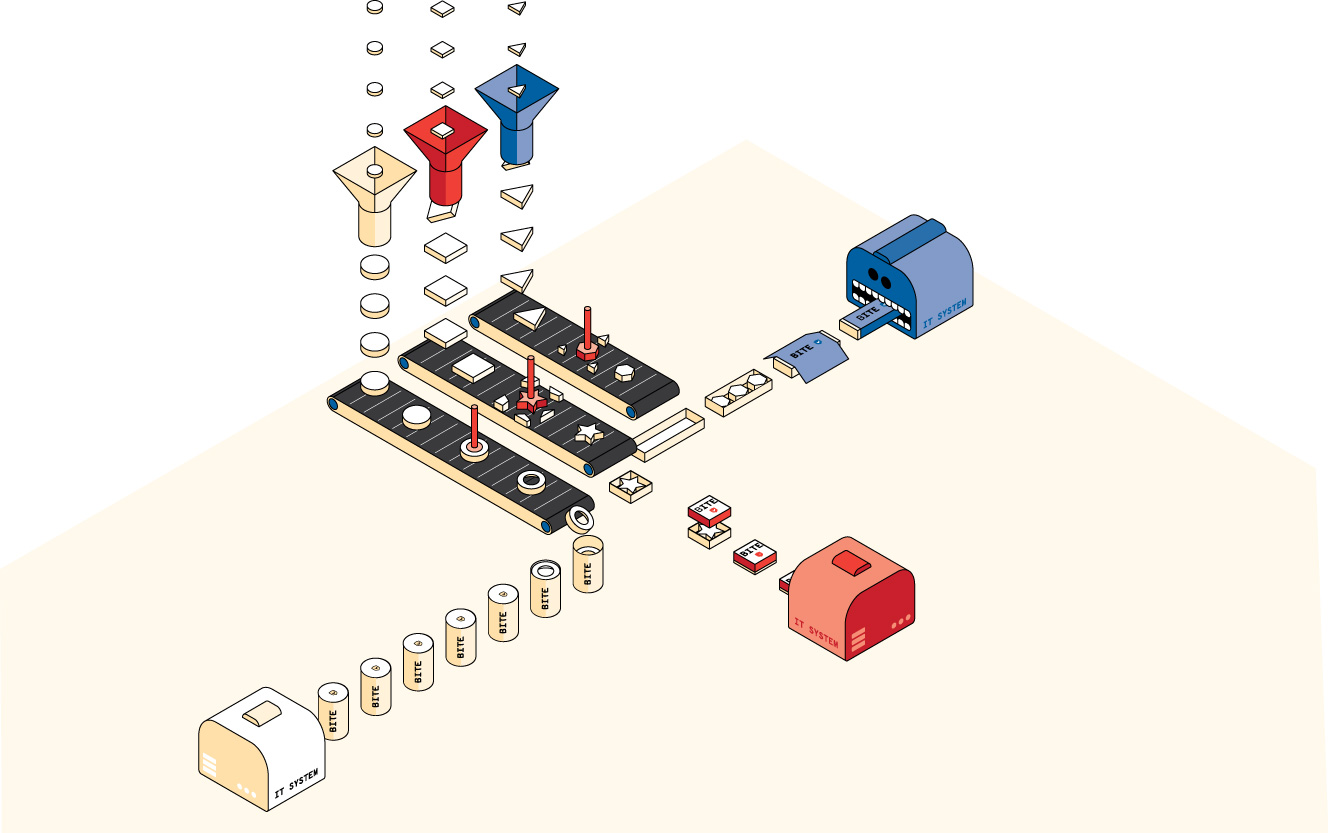From Raw Data to Refined Resource
Much like coal-fired steam engines powered the first factories and connected cities and entire nations through railways in the 19th century, data now fuels the Internet of Things (IoT) and data highways within and between enterprises. Just as the developments of the 19th century ushered in substantial infrastructure improvements and social and political reforms, the rapid pace of technological advancement of the 21st century demands that companies and policymakers adapt with new investments and regulations.
In manufacturing companies, the digitalization of processes has led to an increased reliance on cross-enterprise data management throughout the entire product lifecycle. Rising regulatory demands, such as supply chain laws and transparency requirements for environmental standards compliance, continue to propel data exchange. To harness vast volumes of data from various sources efficiently and effectively, businesses and other societal stakeholders require appropriate technologies and strategies. In this article, we delve into the key concepts and developments essential for digital value creation.
Data Spaces: Enabling Efficient Data Management
Data spaces represent virtual environments or platforms for storing, managing, and exchanging data. They serve as secure and increasingly decentralized repositories for various types of data related to products, processes, and companies. This includes, for example, material data for products, quality data from manufacturing processes, and financial data verifying a company’s operational capability.
Data spaces adhere to the principle of sovereignty, ensuring that companies retain control over their data and can determine who can access it, when, for what purpose, and under what conditions. Within shared or interconnected data spaces, companies can securely share and manage data. For example, they can engage in research and development activities across locations with internal teams, share data along the development or supply chain with external partners, or provide product, machinery, and equipment usage data to customers. This enables manufacturing companies to save time, enhance collaboration efficiency, and establish comprehensive data chains from the extraction of raw materials to product utilization and beyond.
Data Standardization and Normalization: Ensuring Data Quality
Data standardization involves structuring and organizing data in uniform formats to facilitate their exchange and processing within the aforementioned data spaces. Standardizing data models involves unifying data structures, allowing manufacturing companies to use data across different data spaces in various processes. Initiatives for data standardization often originate from entities like the European Union, as seen in the case of the Battery Passport, in which the technical standards for all newly purchased batteries in vehicles, stationary storage systems and larger industrial batteries are to be set out from 2026 on. These standards are then concretized at the national level by developing asset administration shells and standardized submodels. In the case of Germany, this step involves organizations such as the German Institute for Standardization (DIN) and entities like the Platform Industry 4.0 and the Industrial Digital Twin Association (IDTA).
One objective of standardizing data exchange is to ensure network and data quality to enable consistent data processing across data spaces and the applications used therein. They also facilitate cross-company calculation of specific KPIs, such as determining products’ carbon footprints, in compliance with regulatory requirements. Data in a standardized format is also necessary for automated machine learning and data analytics, allowing IT systems to process them. This makes it easier for companies to analyze networked data, for instance, for machine maintenance or assessing products’ footprints based on information from the supply chain, production, and potentially reuse in multiple lifecycles.
Data Sovereignty: Exercising Control Over Data
A fundamental attribute of raw materials is that they undergo many processing steps on the way towards a functional product. This also applies to raw data. In order for data owner to maintain control over the utilization of the latter, the principle of data sovereignty was established. Data sovereignty refers to the autonomous handling of one’s own data, encompassing control over the collection, storage, use, and processing of proprietary data. Often, this concept also extends to digital sovereignty, referring to informational self-determination in the digital age. In addition to political and legislative responses, IT providers at various levels are addressing this principle. They incorporate digital concepts and technologies to ensure that companies can enact their digital sovereignty. Initiatives like Gaia-X and Catena-X play significant roles in this endeavor.
Gaia-X is a European endeavor aimed at establishing secure and interconnected data infrastructures that prioritize both applicable laws and sovereignty. It is based on an open federation of stakeholders. To support their autonomy as well as their collaborative efforts, basic functionalities are provided, enabling the discovery of available services, data sharing, standardization of data models, and fundamental services like authentication. This approach is applied across various domains, from public administration to industrial sectors, mobility services, and healthcare. For example, the Gaia-X 4 Future Mobility project family examines data supply for automated vehicles, system networks for vehicles, product lifecycles, and digital twins for automated driving.
Catena-X builds upon the fundamental principles of Gaia-X. By federated services and a common concept for managing policies on a technical level, it empowers companies to grant access to their data to specific organizations or companies that can demonstrate a particular role through certification. Companies without access do not even necessarily become aware of the data’s existence. The policies in Catena-X can also define conditions for data usage, such as restricting data usage to specific regions or time intervals. This ensures that authorized or certified recycling companies, for example, may access data on the materials used in a vehicle and their supply chain when needed for recycling purposes, while competitors cannot access the material composition.
Data Continuity: Ensuring Seamless Data Flow
Data continuity refers to the seamless and consistent usability of data from various sources and applications. These sources include IT systems, platforms, or databases, distributed throughout the entire product lifecycle. Key aspects of data continuity encompass the following:
- Integration of diverse data sources, such as data from legacy systems into current IT environments.
- Mapping of different data types, like mapping energy data from manufacturing into life cycle assessment models for product development.
- Access to real-time or live data, for instance, when monitoring and controlling 3D printing processes.
- Uniform data formats and standards, fostering interoperability between development and production systems.
- Data quality and governance, including establishing governance for the handling of product-related data.
- Managing changes, such as defining technical and temporal data validity.
Seamless data continuity is achieved through a smooth data flow within and between companies, supported by unified data formats and models, along with necessary interfaces between IT systems. Analyses conducted in data flow assessments by Fraunhofer IPK have highlighted that data continuity is often seen as an isolated IT challenge. In reality, it should align with digital value creation. This perspective addresses not only formats and IT systems but also value-generating activities, coordinating process flow, and structuring organizational entities in the setup. This approach underscores that data continuity serves as the backbone of value creation.

Data-Driven Business Models: Extracting Value From Data
Data-driven business models have become a decisive competitive factor for manufacturing companies. By intelligently collecting, networking, analyzing, and evaluating data, manufacturers not only optimize their internal processes but also generate added value.
Real-time data collected by sensors and interconnected machines allow factory management and specialized personnel to closely monitor production processes and machine conditions. This enables them to detect and resolve bottlenecks or disruptions promptly. Moreover, data analysis offers opportunities for predictive maintenance. By analyzing sensor data, maintenance needs can be foreseen, reducing unplanned downtime and extending the lifespan of equipment, ultimately leading to improved overall production efficiency and reduced operational costs.
Company management can also utilize the obtained data to develop new business models. Manufacturing companies can offer data solutions as a stand-alone product or cooperate with partner companies to place new service offerings on the market. For example, they can monetize their expertise in data analysis and thus tap into new sources of income. There is also potential for data-based business models in the personalization of products and services. By evaluating customer and usage data, companies can offer individual solutions that are tailored to the needs and preferences of their customers. This not only increases customer satisfaction, but also opens up new sales opportunities through customized products and services.
 Fraunhofer Institute for Production Systems and Design Technology
Fraunhofer Institute for Production Systems and Design Technology

